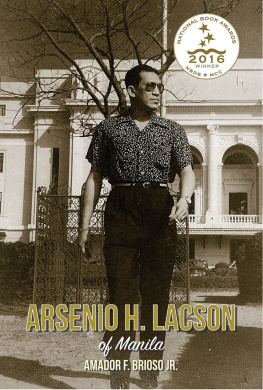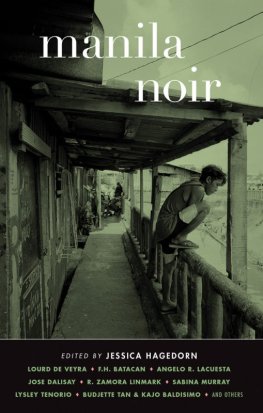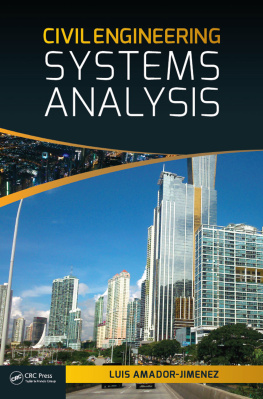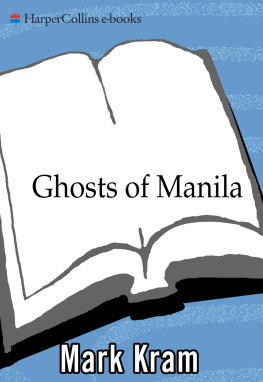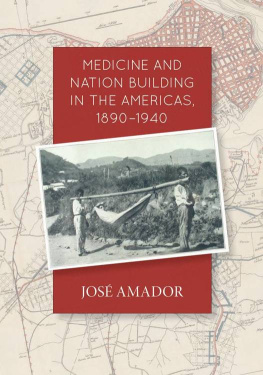Copyright to this digital edition 2015 by
Amador F. Brioso, Jr. and
Anvil Publishing, Inc.
All rights reserved.
No part of this book may be
reproduced in any form or by
any means without the written
approval of the copyright owners.
Published and exclusively distributed by
Anvil Publishing, Inc.
7th Floor Quad Alpha Centrum Building
125 Pioneer Street, Mandaluyong City 1550
Philippines
Phones: 477-4752, 477-4755 to 57
loc. 801802
Fax: 747-1622
E-mail:
ISBN: 9789712731815 (e-book)
Edited by Alfred A. Yuson
Cover design by Ariel Dalisay
Book layout by Jo B. Pantorillo
Version 1.0.1
EDITORS NOTE
When Millie Lacson-Lapira handed me a thick draft manuscript of the biography of Arsenio H. Lacson, I felt that any editorial task involving this would be a signal honor and privilege.
I had grown up in Sampaloc in Manila, my early memories of boyhood inclusive of the daily morning walk I had to conduct from our residence on M. Earnshaw St. to San Beda College.
I was well aware that one of the residences I passed by on my way to school each morning was that of the Mayor of Manila, Arsenio H. Lacson, who was then already legendary. Even in my boyhood, I already heard of his larger-than-life stature, by way of my folks who were proud to have him as a neighbor.
Going through the detailed manuscript by Amador F. Brioso Jr., I was brought back to those days when Manila seemed to be the center of the universe, a proud city made even prouder by the esteem with which its occasionally controversial mayor was held. He was tough, he was feisty, yet he was strongly principled.
All these features of his unique character are brought to life in this biography, thanks to the remarkable research and recounting by the author. The editorial responsibility that fell on my lap simply had to do with reducing the length of the manuscript.
With Millies suggestions and supportive collaboration, it was decided to cut down on the rather inordinate number of confrontations that her father featured in, as well as his numerous run-ins with Manila councilors and political rivals.
The subjects strength of character and obeisance to principles remain, as well as the highly detailed narrative of how he turned his beloved city into a fine example of proper governance, and began to loom large in the national imagination.
I am grateful for the opportunity to have helped in sharing this glorious history.
Krip Yuson
H otel Filipinas was one of the notable landmarks in Manila. In the waning days of the Japanese occupation, the hotel became one of the sanctuaries of the American forces liberating the city.
In post-war Manila and in the decades that came, it became a favorite spot for foreigners, likely owing to its name that drew hordes of patrons: Filipinas indeed sounded exotic apart from representing the nation.
One early November morning in 1977, at the height of a typhoon, a fire razed the hotel. A power outage had forced the guests to light candles, which started the fire. The death toll was astounding, the count reaching almost 50 even as the search for more bodies continued at dusk. The catastrophe spelled the demise of the structure, and likely also to bury in oblivion anything attendant to the structures history.
Not so in the case of Hotel Filipinas. Though long gone, its name and past existence are still well-entrenched in Manilas rich history.
All because of one man. A great man. A legend.
On the day he suffered a fatal heart attack in his suite in Hotel Filipinas, Manila Mayor Arsenio H. Lacson was preparing for his radio program. It was there where he wrote his radio speech that tackled the North Borneo issue.
A letter had been sent to Lacson by one Princess Tarhata Kiram, seeking the help of the mayor. She was a direct descendant of Sultan Jamalul Kiram and heir presumptive to the Sultanate of Sulu. Deploring the Philippine governments inaction, apathy, indifference, and criminal failure to act on that issue, Lacson urged immediate action. Tomorrow may be too late, Lacson had written.
Its now or never! There was a sense of alarm in Lacsons words. He was obviously aware that there would come a time when this unresolved issue might lead to something tragicnot only the loss of part of Philippine territory and sovereignty, but more so the loss of precious lives.
The issue involved a kinship between the people of the island of Borneo and those of the nearby Philippine islands. Some centuries back, a family of valiant warriors from Bornay sailed north to an island where they eventually settled.
In 1372, a descendant of this family rose as a chieftain to govern the island which would later be known as Buglas. Chieftain Mamagtal ruled his domain so fiercely against any conquering invaders. One such group, ten datus from Brunei led by Datu Puti and Datu Sumakwel, had to sail a different course until they settled on another island that would come to be known as Panay.
The kingdoms in Buglas and Panay were bound to be cut short. In the 16th century, a Spanish fleet led by a Portuguese navigator named Ferdinand Magellan landed in another island now known as Homonhon. From that time on, Spanish colonizers continued with their imperialist take-over, baptizing in the name of Christianity and colonizing the islands which they came to christen Filipinas in honor of Spains King Philip.
After about three centuries, the Spanish reign in the Filipinas archipelago would itself end. As it began to fade in the waning decades of the 19th century, another imperial power, the British, was firming its hold on the islands near and around Bornay, which by then had been renamed Borneo.
Gustavus Baron de Overbeck and Alfred Bent struck a deal in 1878 with Sultan Mahomet Jonal Al Alan, of the Sultanate of Sulu that ruled Borneo, whereby the British pair would lease for an annual sum of $5,000 the portion of the territory later to be known as British North Borneo.
At the turn of the century, the Spanish empire in the archipelagic islands of Filipinas started to crumble. There would rise a new republic in the island of Negros, the territory which Chieftain Mamagtal ruled several hundred years back.
Aniceto Lacson, the island-republics president, and his army had overthrown the Spanish might in the island, a feat which his counterpart revolutionaries in Manila and Luzon were unable to achieve. Destiny, however, would assert its will, and eventually, Lacsons infant republic, as well as the revolutionaries all over the islands, embraced the authority of the new imperial powerthe United States of America.






